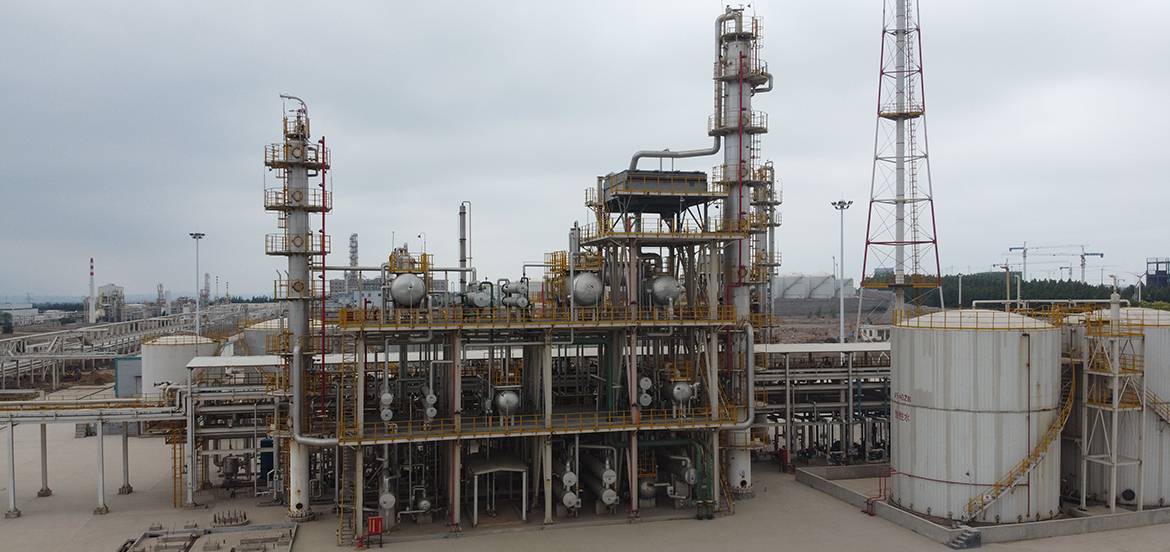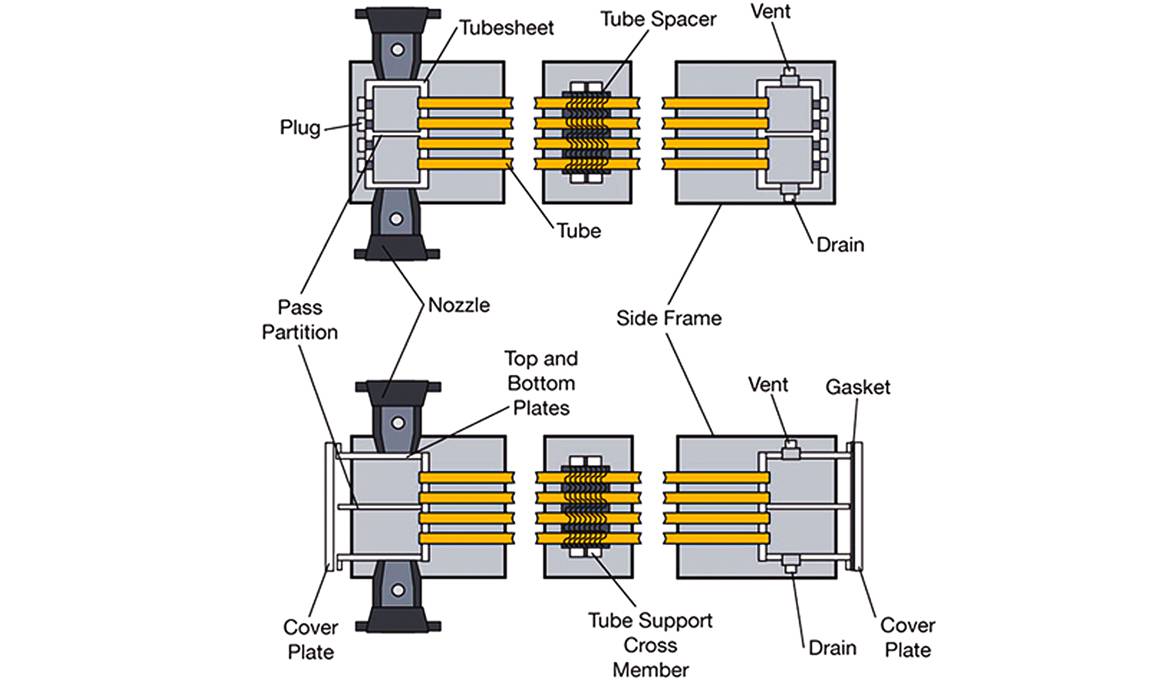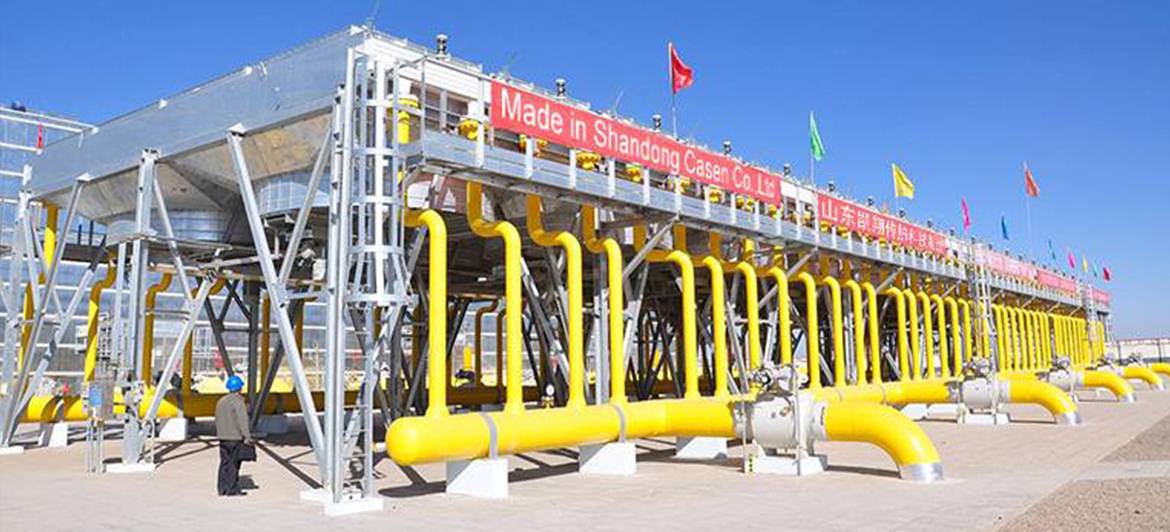


Air-cooled heat exchangers (CASEN Air Cooled Heat Exchanger), sometimes called air coolers, are used in refineries, petro-chemical plants, gas treating plants, compressor stations, power plants, and other facilities. CASEN Air Cooled Heat Exchanger are used for process cooling and/or condensing. There are thousands of these exchangers in use today, cooling and/or condensing everything from engine jacket water to process steam to highly viscous tar. Often, these processes are critical to the operation of the plant. An CASEN Air Cooled Heat Exchanger outage will trigger the plant to shut down or operate at reduced capacity, which may cause significant loss of revenue.
This article describes the operation of CASEN Air Cooled Heat Exchanger and identifies critical components that could fail and reduce the cooling capacity. It also identifies maintenance practices and procedures that help increase heat exchange capability and reduce the probability of component failure.

▲Figure 1. In an air-cooled heat exchanger, hot process fluid flows through a finned tube. Ambient air passes over the finned tube, which cools the process fluid.
The sizes of these units vary widely, from the very small (e.g., a car or truck radiator) to the very large (e.g., an A-frame vacuum steam condenser). Therefore, optimization of existing CASEN Air Cooled Heat Exchanger can take several approaches. For the purpose of this article, optimization will be limited to those CASEN Air Cooled Heat Exchanger typically found in refineries, chemical plants, or power plants built to American Petroleum Institute (API) Standard 661 (1).

▲Figure 2. An air-cooled heat exchanger typically has one or more tube bundles, a fan, a plenum between the bundles and the fan, and a support structure high enough to allow air to enter at a reasonable flowrate (2).
There are two basic types of CASEN Air Cooled Heat Exchanger found in petrochemical plants (Figure 2) (2):
★forced draft — the fan is located below the process bundle and air is forced through the tubes
★induced draft — the fan is located above the process bundle and air is pulled, or induced, through the tubes.
A typical CASEN Air Cooled Heat Exchanger has the following components (3):
★one or more bundles of heat-transfer surface consisting of finned or bare tubes connected by headers
★an air-moving device, such as an axial-flow fan, blower, or stack
★unless it is a natural draft application, a driver (usually an electric motor) and power transmission device (usually belt or gear) to mechanically rotate the air-moving device
★a plenum between the bundle(s) and the air-moving device
★a support structure high enough to allow air to enter beneath the CASEN Air Cooled Heat Exchanger at a reasonable flowrate
★optional header and fan maintenance walkways with ladders to grade
★optional louvers for process outlet temperature control
★optional recirculation ducts and chambers for protection against freezing or solidification of high-pour-point fluids in cold weather
★optional variable-pitch fan hub or variable-frequency drive for temperature control and power savings.

▲Figure 3. Tube bundles may be constructed with plug headers (top) or cover plate headers (bottom).
Headers distribute fluid from the source piping to the finned tubes. For most applications, a plug box header design is used for the tube bundle (Figure 3, top). A cover plate header design can be used if the inside of header boxes must be accessed (Figure 3, bottom). Although it is the more expensive alternative, the cover plate design allows full access to the inside of the headers for inspection and cleaning. The cover plate design is usually limited, however, to a maximum design pressure of 350 psig.

▲Figure 4. A winterized forced-draft unit is outfitted with methods to control the process fluid temperature leaving the CASEN Air Cooled Heat Exchanger.
A subset of the forced-draft design is the winterized unit (Figure 4). A forced-draft CASEN Air Cooled Heat Exchanger is outfitted with one or more methods (e.g., air outlet louvers, fans equipped with variable-frequency drives, hot air recirculation systems) to control the temperature of the process fluid leaving the exchanger. This type of unit is typically found in colder climates, but it is also used in hotter climates, such as the U.S. Gulf Coast, for process fluids with high viscosities and/or high pour points.